A Guide to Unicellular Organisms
Not all organisms work the same way. There are many creatures in our world whose bodies are just 1 cell.
5-Minute Crafts is going to tell you about the different kinds of unicellular organisms.
What a unicellular organism is
As you can deduce from the term, a unicellular organism is an organism consisting of a single cell. The cell performs all the basic processes that all living creatures do: nutrition, reproduction, digestion, and excretion.
Most unicellular organisms are microscopic in size and not visible without special equipment. But some of them can form colonies that can be seen with the naked eye.
Types of unicellular organisms
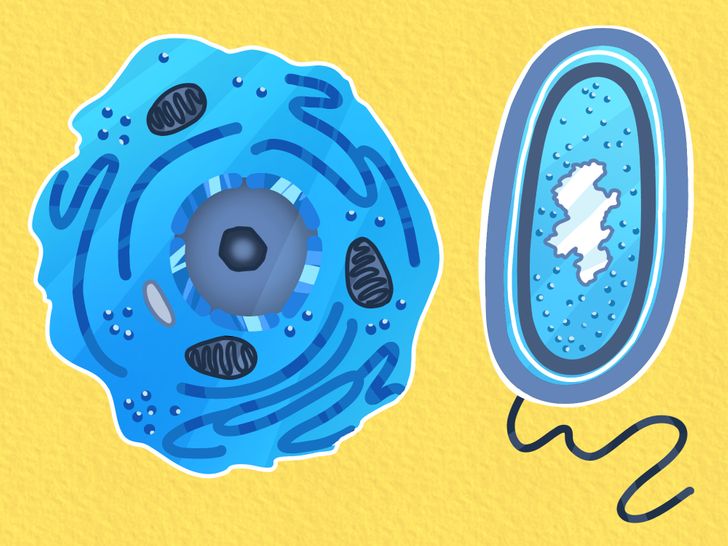
Unicellular organisms can be split into 2 big groups: prokaryotes and eukaryotes.
Prokaryotes (most unicellulars are this type) are organisms that don’t contain a nucleus. Their DNA is freely in the cytoplasm. These cells easily adapt to environmental conditions and can use organic and non-organic compounds to support their metabolism. Archaea and bacteria are prokaryotes.
Eukaryotes can be unicellular and multicellular. Their cells contain a nucleus that stores the DNA and organelles that perform different functions. Eukaryotes are fungi, protists, protozoa, and algae.
Kinds of unicellular organisms
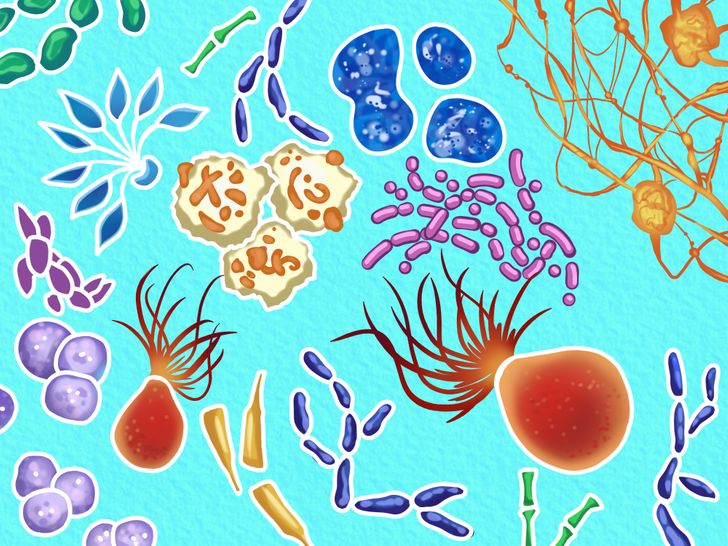
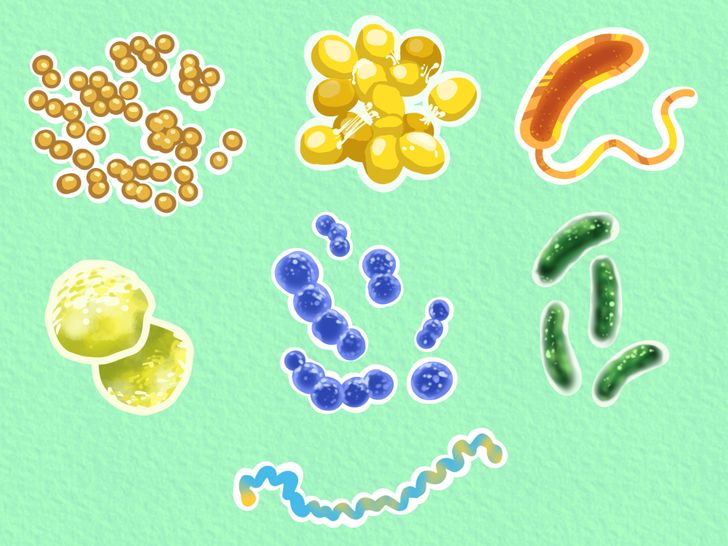
- Bacteria are some of the most abundant unicellular organisms in the world. They are prokaryotic cells, which means that they are simple, unicellular organisms that lack a nucleus and membrane-bound organelles. Different types of bacteria will have structures like the flagellum, pili, biofilm, cell wall, and a capsule, among others.
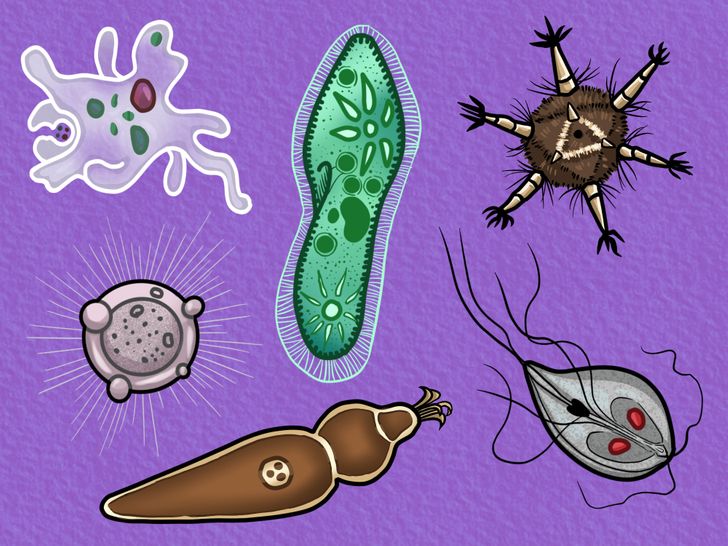
- Protozoa are eukaryotic unicellular organisms. They portray traits that are common among other animal cells. Given that there are different types of protozoa, their classification is largely based on their means of locomotion. They include amoeba, lamblia, Phylum Ciliophora, and others.
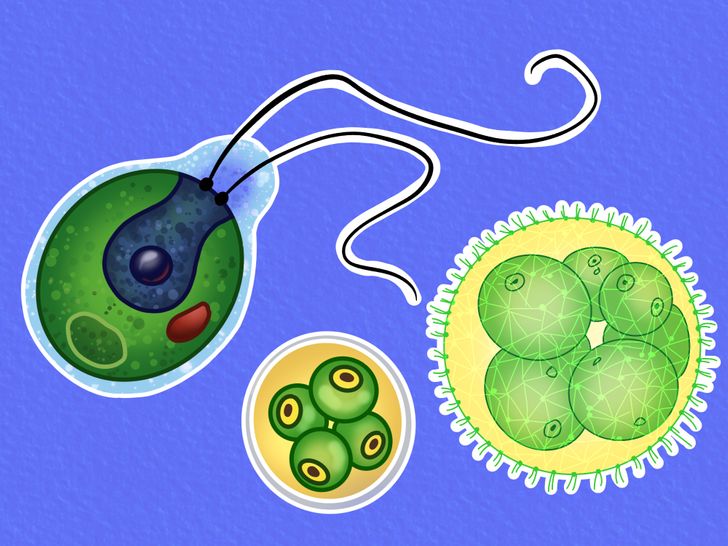
- Algae are a diverse group of photosynthetic organisms that can be found in a wide range of habitats (from aquatic to land). The unicellular algae are mostly plant-like autotrophs that can make their own food. They include chlorella, chlamydomonas, and volvox.
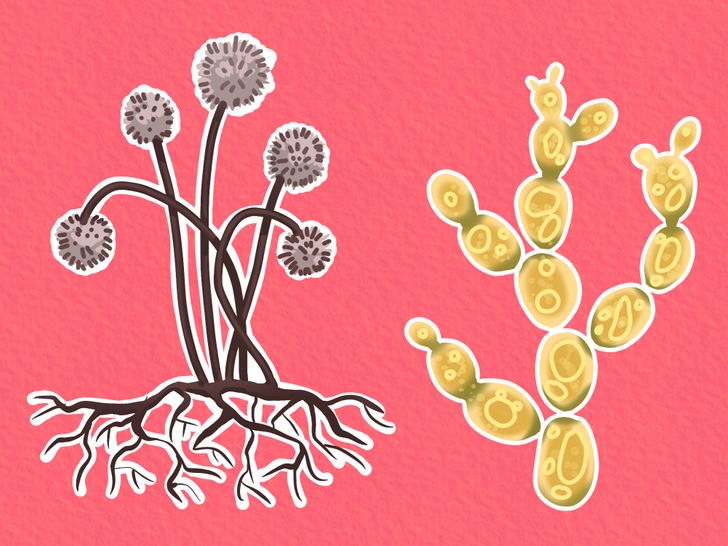
- Fungi are also eukaryotic cells, which means that they possess a cell nucleus and other cell organelles. They reproduce either by budding or fission. Unicellular fungi include yeast and mucor.
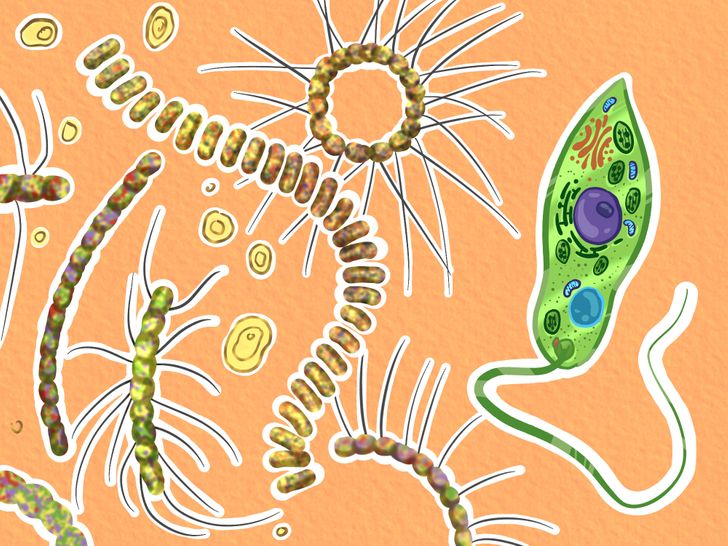
- A protist is any eukaryotic organism that is not an animal, plant, or fungus. They include phytoplankton that is a plant-like organism and euglenas that are in between a plant and an animal cell.